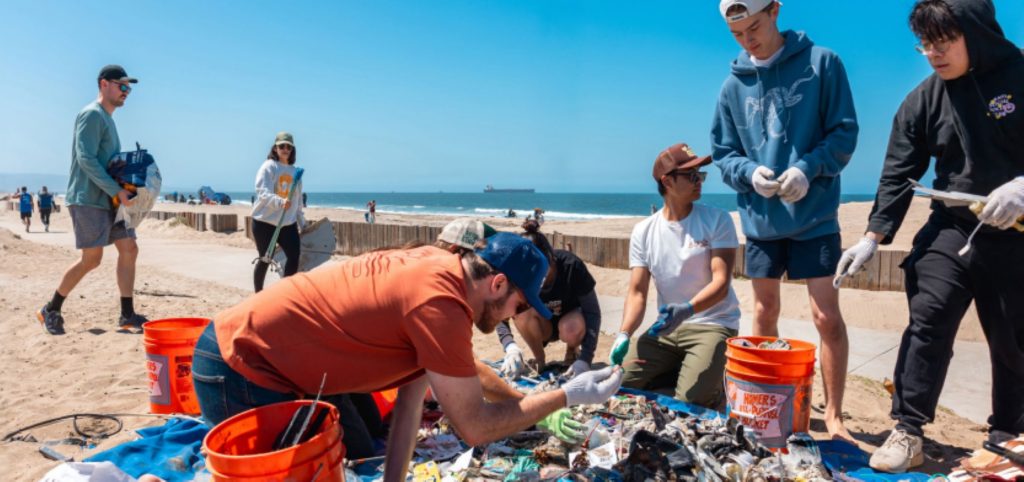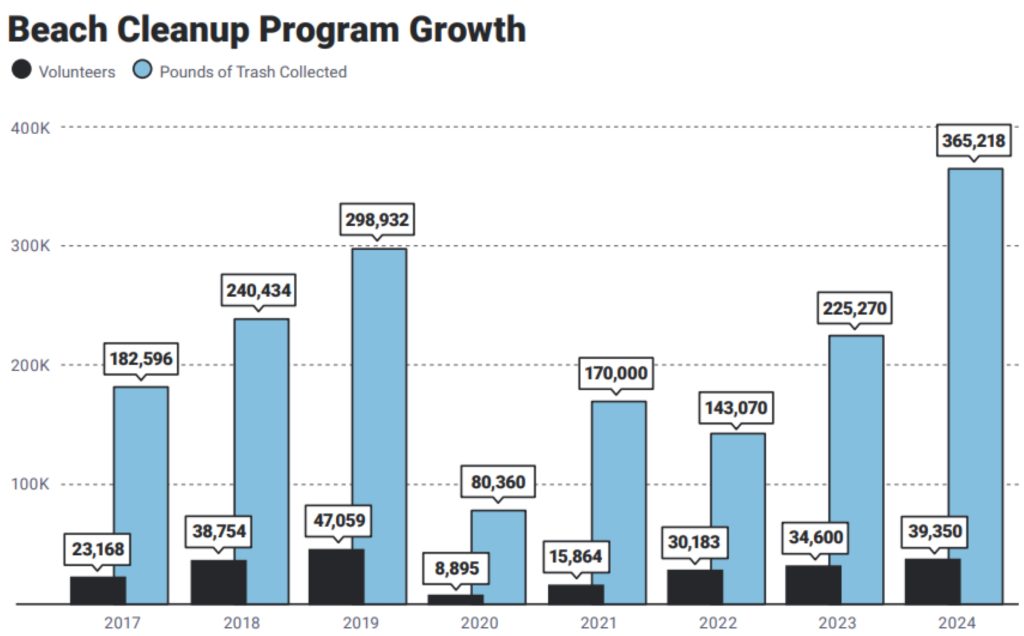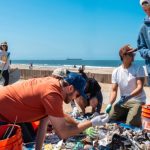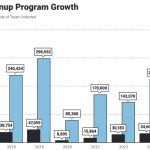Surfrider Kaua‘i removes record-breaking 81 tons of trash from island beaches, coasts in 2024
Surfrider Kaua‘i in 2024 led efforts that resulted in the removal of nearly 163,000 pounds — or 81 tons — of marine debris and trash from Kaua‘i beaches and coastlines.
That breaks the previous record set in 2017 by almost 43,000 pounds.
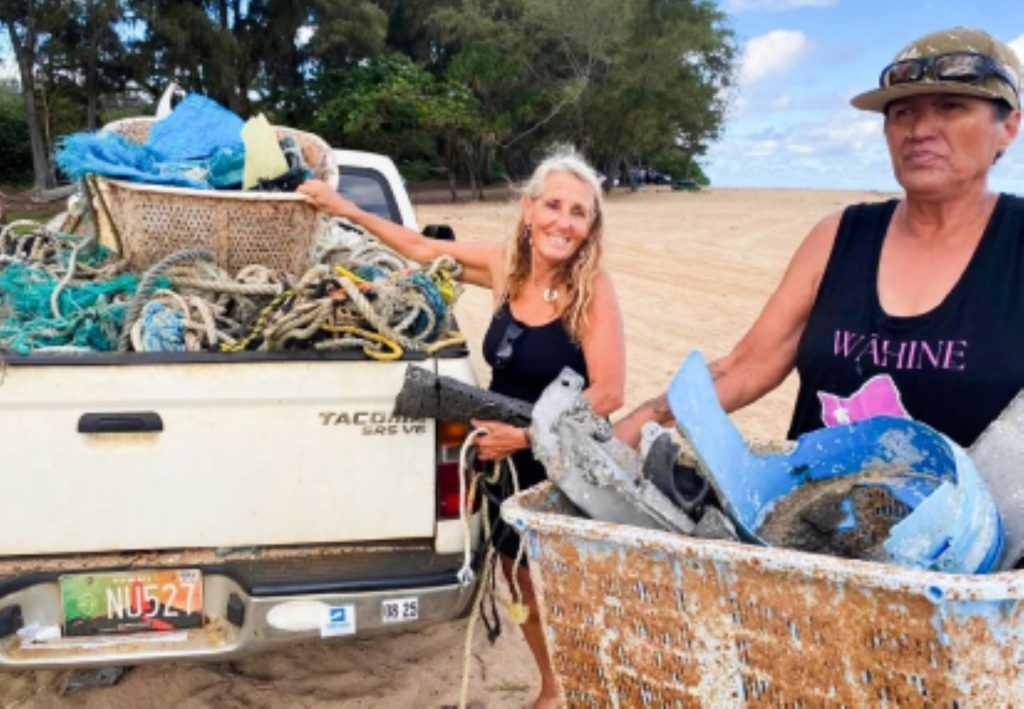
Surfrider’s “2024 Beach Cleanup Annual Report: Clean Beaches, Clear Solutions” shows the overwhelming majority of the trash and debris collected last year from around the Garden Isle — 154,157 pounds — was marine debris such as fishing nets, lines, eel traps and other pollution that kills marine life and destroys reefs.
The International Whaling Commission reports that 300,000 marine mammals — including whales, dolphins, seals and sea lions — die each year because of entanglements with ghost fishing gear.
When turtles and fish are added, the number of deaths is close to 1 million.
“One of the reasons so much debris lands on Kaua‘i’s beaches and coastline is that ocean currents have pushed the Pacific Garbage Patch closer to the islands,” reports Surfrider Hawai’i Regional Manager Hanna Lilley in this year’s annual beach cleanup report.
Lilley referred to an area of the North Pacific where many think there is a large continuous patch of easily visible marine debris such as bottles and other litter — like a literal island of trash.
However, the National Oceanic and Atmospheric Administration’s National Ocean Service says while higher concentrations of litter can be found in that area of the Pacific Ocean, much of it is small pieces of plastic not immediately evident by the naked eye.

The waste that washed up in 2024 on Kaua‘i shores and was collected by Surfrider Kaua‘i-led efforts was done through:
- Weekly net patrols, which included 287 cleanups.
- Ghost Net Hotline response.
- Community and hui cleanups.
- Keiki field trip cleanups.
- Solo cleanups by island residents as well as visitors, who learn about cleanups through social media or Surfrider Kaua‘i’s Ocean Friendly Visitors program hotel partners.
And all of it was by volunteers.
“The Surfrider Foundation’s grassroots network of chapters and student clubs serves as the first response to local threats in our coastal communities,” states the annual report. “With more than 200 chapters and student clubs nationwide, Surfrider volunteers work within their communities to create and lead meaningful change.”
Surfrider Kaua‘i also partnered with Hawai‘i Wildlife Fund and Hawai‘i Pacific University’s Center for Marine Debris Research.
The nonprofit Garden Isle chapter of the national foundation tallied a whopping 5,615 total volunteers — including 444 Kaua’i keiki — and 6,424 volunteer hours by the end of 2024.
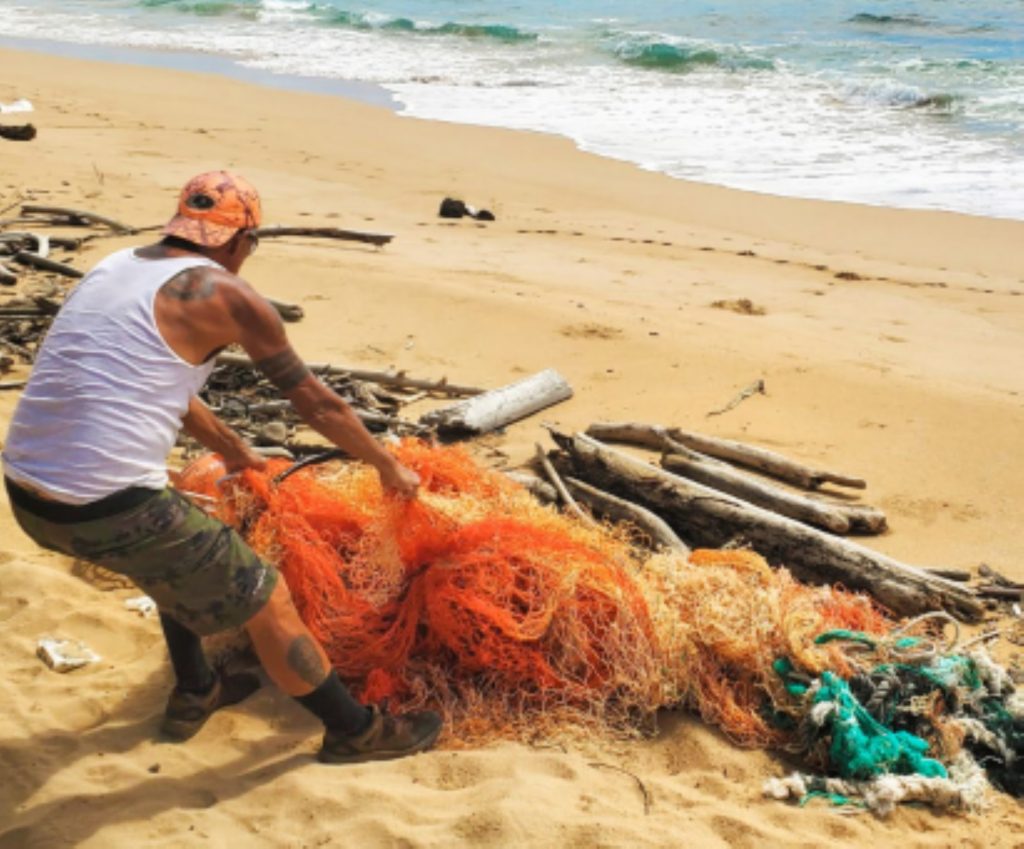
Overall, Surfrider Hawai‘i organizations collected a total 172,564 pounds of trash from island beaches and shores statewide throughout all of last year during 47 cleanups, vastly outdoing those in other states.
Washington state was second in total pounds collected with 76,407 — just more than 96,000 pounds fewer than Hawai‘i — during 59 cleanup events. Texas was last in total collected with just 796 pounds, or 171,768 fewer than the Aloha State, and having 12 cleanup activities.
Beach cleanups have been an integral part of Surfrider’s programs for decades.
“They’re an important way to engage new volunteers and enable them to learn in a hands-on manner about the issues affecting our ocean and coasts — often inspiring volunteers to become grassroots activists in their local chapters who work towards making positive, pragmatic changes within their communities,” the annual report says.
Last year’s data show even bigger impacts than ever before.
Surfrider Foundation recorded the largest amount of trash ever removed from beaches throughout the nation during cleanups, totaling a record 365,218 pounds of trash — nearly 183 tons — during 2024.
That’s 65,000 pounds more than the previous record.
“As Surfrider’s incredible network of coastal advocates continues to grow, we are seeing bigger impacts and more impressive results in protecting our ocean,” the annual report says.
The 2024 beach cleanup report highlights Surfrider’s cleanup efforts, but last year’s data shows that the organization and its local chapters throughout the nation are making even bigger impacts than ever before — displaying a continuing commitment to protecting coasts and the ocean.
Visit Surfrider’s beach cleanup database for additional information about the nonprofit’s beach cleanup programs and more data.
You can read the full 2024 annual beach cleanup report here.





